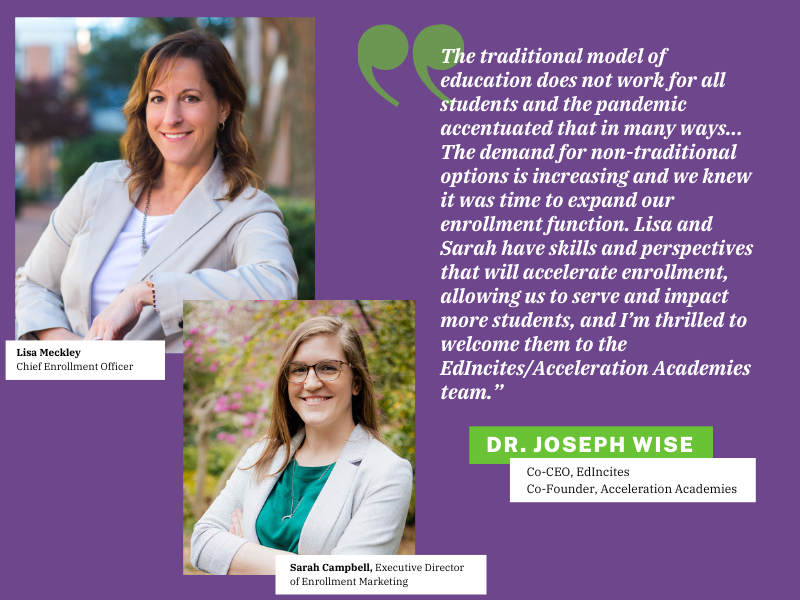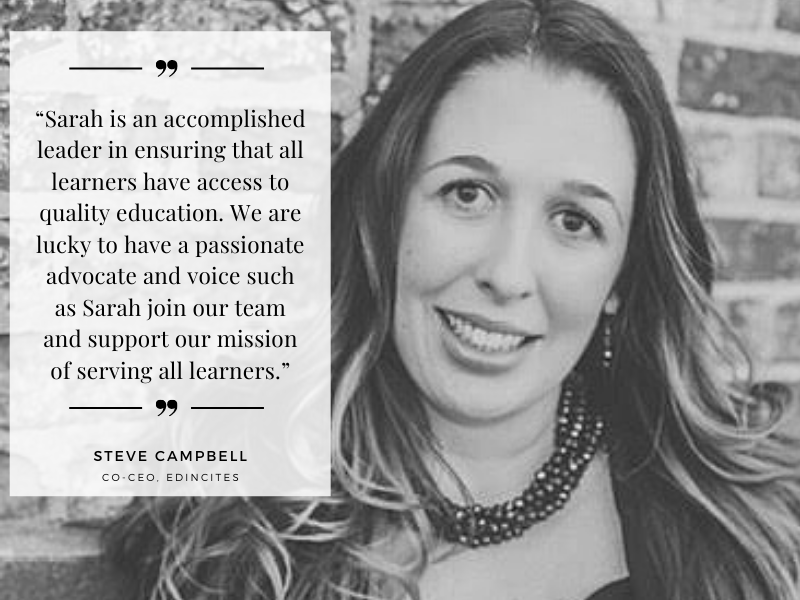It’s hard to believe we are coming up on a year of this new pandemic way of life. This time last year, coronavirus was just making its way into the United States and students were still in the classroom. The pandemic has changed many aspects of life, and K12 education is not an exception. As we enter a new era of education, we are seeing a new slew of trends, phrases and buzzwords. This post breaks down the hottest trends in K12 education in 2021.
#1: Remote Learning
Also known as virtual learning, online learning or even distance learning, remote learning is teaching and learning that takes place outside of the traditional classroom. According to an August 2020 Burbio.com survey, roughly half of all students were participating in remote learning as opposed to in-person learning due to the coronavirus pandemic. Districts and teachers are using a range of tools for remote learning such as learning management systems (LMS) like the Incite® Platform. EducationWeek, in coordination with the Council of the Great City Schools, has put together this tracker, which shows which mode of learning some of the largest school districts in the nation are following.
#2: Blended Learning
The textbook definition of blended learning, according to Wikipedia is: “an approach to education that combines online educational materials and opportunities for interaction online with traditional place-based classroom methods. It requires the physical presence of both teacher and student, with some elements of student control over time, place, path, or pace.” In 2021, blended learning, or hybrid learning, most commonly means that students have some combination of in-person learning and online learning. As of November 2020, the majority of American schools employed hybrid learning in some capacity, according to an EducationWeek article. The exact makeup of in-person versus online depends on a number of factors such as the local community’s COVID-19 transmission rates, technology capacity and desire or students and staff to be in the classroom.
#3: Social Emotional Learning
The coronavirus pandemic has highlighted the need for increased attention and resources for mental health for all age groups from toddlers through senior citizens. In recent years, educators have implemented Social-emotional Learning (SEL) into K12 curriculum with impressive results. But, what exactly is Social-emotional learning? According to the Committee for Children, SEL is the process of developing the self-awareness, self-control, and interpersonal skills that are vital for school, work, and life success. The Committee for Children cites the following benefits of Social-emotional learning:
- 20% less bullying for students with disabilities
- 13% increase in academic achievement
- 5-12% decrease in drop-out rates
- $11 returned for every $1 invested in Social-emotional learning
#4: Inclusion
There are a couple of important facets of inclusion in the context of K12 education. The Oxford Dictionary defines inclusion as “the practice or policy of providing equal access to opportunities and resources for people who might otherwise be excluded or marginalized, such as those who have physical or mental disabilities and members of other minority groups.” As an instructional model, inclusion means that students with special needs spend most or all of their time with non-special needs students. Inclusive classrooms have benefits for all students, not just the ones with special needs. This article does a great job outlining some of those key benefits, such as normalizing differences and increased support and expectations.
#5: Accessibility & Equity
The coronavirus pandemic has highlighted the disparities in access to technology and resources among different ethnic and socio-economic populations. For example, a Pew Research Center study found that 35% of households in the US with school-aged children with an annual income of under $30,000 do not have access to high-speed Internet. That figure is only 6% among households earning $75,000 or more. We believe all learners, regardless of race, socio-economic status, age, physical ability or other qualities should have equal access to technology. And we aren’t alone. Earlier this year, we shared the stories of six educators who are on a mission to fight for accessibility and equity in 2021.
#6: Synchronous and Asynchronous Learning
Synchronous and asynchronous learning are terms that have emerged as more educators began to embrace technology for teaching and learning. Synchronous learning is learning that happens in real-time for teachers and students and asynchronous learning is the opposite. So, for instance, a lesson delivered in a traditional, in-person classroom setting would be asynchronous learning. A Zoom session where the teacher and students all log in at the same time for class would also qualify as synchronous learning. If a teacher recorded a lesson in advance and sent the video to their students to watch at their convenience, or if the teacher prescribed assignments or resources to their students to explore on their own time, that would be asynchronous learning. Effective instruction will combine opportunities for synchronous and asynchronous learning. WeAreTeachers provides some great tips for striking the right balance in this article.
#7: Digital Classroom
We all know what a traditional classroom is. It’s easy to envision the four walls, student desks spaced evenly in rows, bookshelves to the side, and a whiteboard at the front of the room. Unlike a physical classroom, a digital classroom is a more abstract concept. It incorporates elements of technology into the physical space, or, in 2021, it could be fully digital. Students have access to devices and curriculum is delivered interactively via digital platforms. This article from TeachersPayTeachers outlines the benefits of the digital classroom and provides tips for creating your own digital classroom. Tools like Incite® Assessment and Incite® Classroom are hugely helpful for school districts and educators who want to create effective and engaging digital classrooms.
#8: LMS
Another important K12 technology trend right now is the use of Learning Management Systems (LMS). What is an LMS? According to Wikipedia, an LMS is a “software application for the administration, documentation, tracking, reporting, automation and delivery of educational courses, training programs, or learning and development programs.” The Incite® Platform is an award-winning LMS that helps teachers, parents and students stay connected across classroom and digital learning experiences. One of our favorite articles about Learning Management Systems is this one that compares an LMS to a school campus.
#9: Digital Citizenship
Digital citizenship is the notion that people should use technology regularly, effectively, responsibly and safely. All but two of the top nine K12 education trends outlined here involve technology, so it’s easy to see why this is so important. ISTE further defines digital citizenship and frames it in context of K12 education: It’s about “empowering learners to be in community with others in online spaces and showing them that digital citizenship goes beyond conversations about personal responsibility. It’s about being active citizens who see possibilities instead of problems and opportunities instead of risks as they curate a positive and effective digital footprint.”
#10: Personalized Learning
While it is not a new concept, personalized learning is gaining popularity each year as technology improves and data backs up the effectiveness of its approach. Personalized learning is an educational method that tailors instruction to the unique needs and preferences of each individual student. This article from ISTE outlines six practical tips for implementing personalized learning into your classroom. Stay tuned to our blog for an upcoming feature all about personalized learning, coming in March!
There you have it! These are 10 hottest trends in K12 education in 2021! As always, we are excited to be a part of the incredible education and education technology community. We are optimistic that the best is yet to come!



